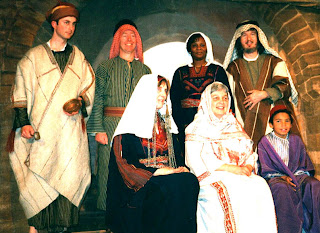
You may have noticed a couple of recent additions to the 'Bible illustration blog'.
I have been slowly adding 'Related links' to the end of each post. Also, I have now added a 'Posts grouped by Topic' section, which you will find in the right hand column just below the pale blue WCPE link banner.
This should make it a lot easier for you to find the subjects that I've blogged about. e.g. If you are interested in posts that relate to 'Biblical buildings' or the 'Ark of the Covenant' they can now be easily found grouped into topics in this section!
Although it was possible to find all the posts in the 'Archives' section it was not possible to view them by topic. Now you can! This is a work in progress as only two thirds of the posts have been added to this section so far, so keep an eye out for new topics!
Both these additions will hopefully further enhance your browsing experience of the B.I.B. Since adding these two additions I've noticed that the average time spent on the site has almost doubled! So these may be a helpful tips for other bloggers.
The Bible picture above is from the story of the 'Temptation of Jesus' which is not finished as yet. Dr Leen Ritmeyers superb book on Herod's Temple, (The Quest), has been a great help for this particular story. I will be blogging about 'The Quest' and the 'Temptation' story soon.
Related posts:
New 'Search' feature!
New 'Bible Artist' list



